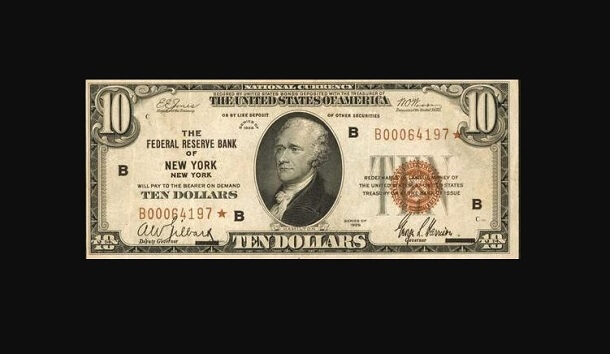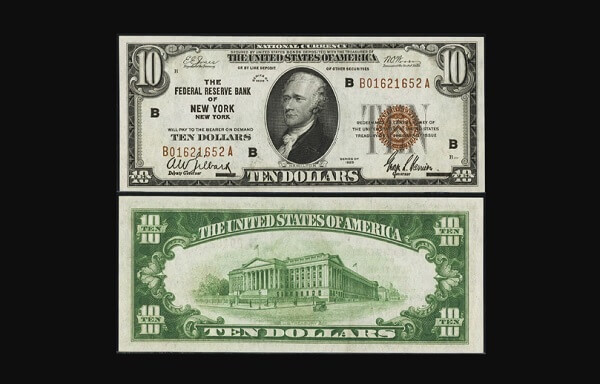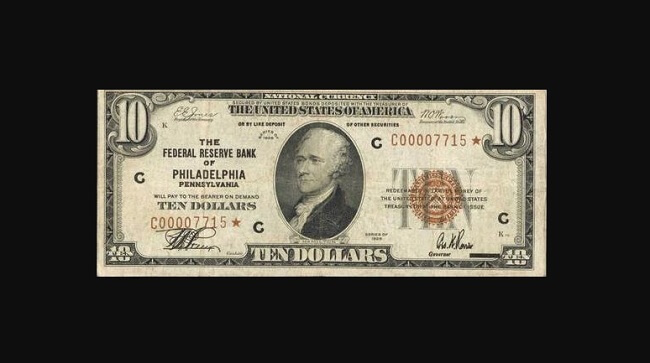1929 10 Dollar Bill Value – The 1929 10 dollar bill holds a special place in the history of American currency. This small piece of paper, adorned with the portrait of Alexander Hamilton, may seem unremarkable at first glance.
However, the story behind its creation and the evolution of its value over the years is truly fascinating.
From its humble beginnings in the midst of the Great Depression to its current status as a sought-after collector’s item, the 1929 10 dollar bill has a rich and intriguing history that has captivated many.
It’s always exciting to uncover the hidden worth of old currency! Let’s take a closer look at the journey of this iconic banknote and its ever-changing value.

The Historical Context of the 1929 $10 Bill
The historical context of the 1929 $10 bill provides important insights into the economic and social climate of the time. This particular banknote was issued during the Great Depression, a period of immense financial hardship for the United States.
As the country grappled with widespread unemployment and a collapsing stock market, the value of the 1929 $10 bill reflected the struggles of the nation.
In addition to its economic significance, the 1929 $10 bill also has a unique historical context due to its design and production.
The bill features the portrait of Alexander Hamilton, one of the Founding Fathers of the United States and the first Secretary of the Treasury.
Hamilton’s presence on the banknote serves as a reminder of his crucial role in establishing the nation’s financial system.
Moreover, the 1929 $10 bill is notable for being part of a transition in American currency. It was issued as both a Federal Reserve Bank Note and a National Bank Note, distinguishing it from earlier iterations of the $10 bill.
The choice between these two types of notes was determined by whether the bill was issued by a Federal Reserve Bank or a National Bank.
Understanding the historical context of the 1929 $10 bill allows us to appreciate its significance beyond its monetary value.
1929 10 Dollar Federal Reserve Note Value
Curious about the value of your 1929 $10 Federal Reserve Note? Well, you’re in luck! In most cases, these notes are worth around $52.50-60 in very fine condition. However, if you have an uncirculated note with a high grade of MS 63, the price can range from $175-200.
Now, here’s where it gets interesting. If your 1929 $10 Federal Reserve Note was issued from the Federal Reserve Banks of Dallas or San Francisco, its value increases even more.

These notes are considered more valuable due to their scarcity and desirability among collectors. So, keep an eye out for those!
1929 10 Dollar National Bank Note Value
The 1929 10 dollar National Bank Notes come in two types: Type 1 and Type 2. While they may look similar, it’s important to pay close attention to spot the difference.
The only distinguishing feature of Type 2 bills is the presence of the bank charter number on the lower left and upper right of Alexander Hamilton’s portrait.
The value of these 1929 National Bank Notes mainly depends on their type and condition.
- Type 1 bills, in very fine condition, are worth approximately $75. If the bill is in extremely fine condition, the value increases to around $100. For uncirculated bills with an MS 63 grade, the price can go up to approximately $225.
- On the other hand, Type 2 bills in very fine condition are worth around $80, and in extremely fine condition, the value increases to around $105. In uncirculated condition with an MS 63 grade, the price can reach around $250.
It’s worth noting that valuable bills should be stored inside currency holders to ensure their preservation and protection.
1929 10 Dollar Bill Grading System
The grading system for the 1929 10 dollar bill provides valuable insights into the condition and quality of the note.
A note that is classified as “very fine” has been in circulation but not for a long time. Despite its circulation, the note remains relatively crisp.
However, there may be some creases, folds, or light smudges present.
This grading indicates that the note has been handled, but it is still in good condition overall.
On the other hand, an “extremely fine” note shows small signs of having been in circulation. It will still be bright and retain almost all of its original crispness. While there might be one or two minor creases or folds, there are no stains, discolorations, or tears on the note.
This grading signifies a note that has been well-preserved and is in excellent condition for its age.
An “MS 63 choice uncirculated” note is in the best condition possible. It shows no signs of ever having been in circulation and still retains its original crispness. These notes are also well-centered, meaning that the design and text on the notes are properly aligned.
This grading indicates a note that is in pristine condition and is highly sought after by collectors.
Understanding the grading system for the 1929 10 dollar bill can help you assess the quality and value of your own note.
Geographic Impact on 1929 10 Dollar Bill Value: Philadelphia Vs. Chicago
When it comes to the geographic impact on the value of 1929 10 dollar bills, there is an interesting distinction between Philadelphia and Chicago. While both cities played significant roles in the economic landscape of the United States during that time, they have had different effects on the value of these banknotes.

Philadelphia, as the birthplace of American independence and a historically significant city, often commands higher prices for 1929 10 dollar bills.
The rich history and cultural significance of the city make these notes more desirable among collectors. Additionally, if a note from Philadelphia is in excellent condition or has any rare features, its value can increase even more.
On the other hand, Chicago, as a major hub of commerce and industry, has its own impact on the value of 1929 10 dollar bills.
The bustling city and its economic significance make these notes sought after by collectors. However, the value may not reach the same heights as those from Philadelphia.
The geographic impact on the value of 1929 10 dollar bills highlights the interplay between historical significance, cultural context, and the desirability of certain locations.
Estimating Your 1929 Ten Dollar Bill’s Current Market Value
Estimating the current market value of your 1929 Ten Dollar Bill can be an exciting endeavor for any collector or enthusiast. With the historical significance and scarcity of these banknotes, determining their worth can be an intriguing journey.
Several factors come into play when assessing the value of a 1929 Ten Dollar Bill. The condition of the note, its rarity, and any unique features it may have all contribute to its market value.
One key aspect to consider is whether the bill is a Federal Reserve Bank Note or a National Bank Note.
Each type has its own value range, with certain banks or states being more desirable than others.
Additionally, the geographical location of the note’s origin can also impact its value. Notes from historically significant cities like Philadelphia or Chicago often command higher prices due to their cultural significance.
To get an accurate estimate of your 1929 Ten Dollar Bill’s current market value, it is recommended to consult with a professional or experienced currency appraiser. They will be able to evaluate the specific characteristics of your note and provide an informed estimation of its worth.
Conclusion
The 1929 10 dollar bill holds a fascinating history and continues to captivate collectors and enthusiasts alike. Its journey from the Great Depression to its current status as a sought-after collector’s item showcases its enduring value and significance.
The historical context of the 1929 10 dollar bill provides important insights into the economic and social climate of the time. As a piece of currency issued during the Great Depression, it reflects the struggles of the nation and reminds us of the resilience of the American people.
If you’re lucky enough to come across a 1929 10 dollar bill, take the time to assess its condition and seek professional guidance to determine its current market value.
See Also About Other $10 Bills: